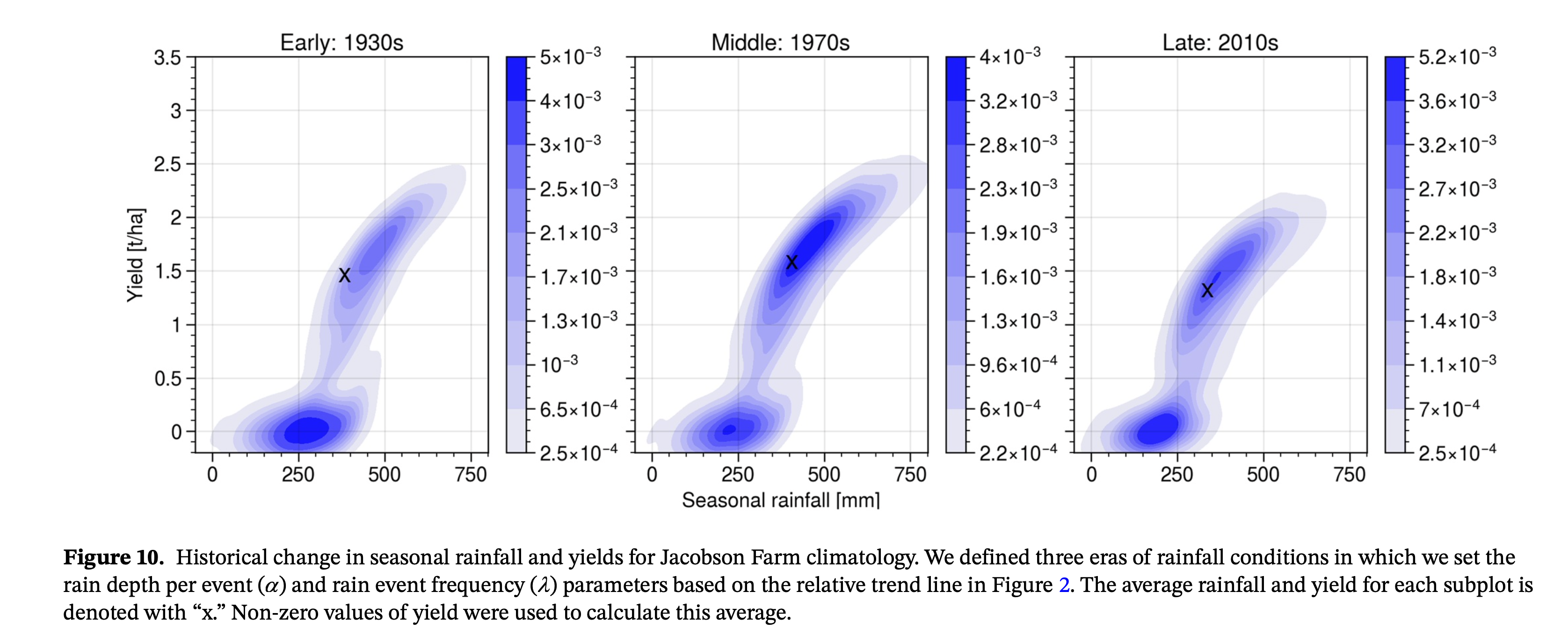Consequences of dryland maize planting decisions under increased seasonal rainfall variability

Krell, N.T., Morgan, B., Gower, D., Caylor, K.K.(2021) Consequences of dryland maize planting decisions under increased seasonal rainfall variability. Water Resources Research, 10.1029/2020WR029362
Abstract:Shifts in rainfall frequency and intensity can lead to heavy crop loss in rainfed agricultural systems. Small-scale farmers who plant with limited resources need to carefully select management strategies that are well suited for their environment. Farmers must choose between planting higher-yielding varieties that take longer to mature and lower-yielding varieties that can be harvested sooner. To better understand the interactions between rainfall variability, cultivar choice, and cropping success, we implement an ecohydrological model that accounts for variation in daily soil moisture and converts water stress to crop yield. We apply the model to growing conditions of dryland farmers in central Kenya, which is a drought-prone and semiarid region with spatially heterogeneous rainfall. To simulate stochastic daily rainfall, we derive parameters in 10-day increments from a 30+ year daily rainfall data set. We use these properties to model the stochastic seasonal water availability for cultivars with different maturation lengths. In agreement with past studies, our analysis shows that storms are becoming more intense and less frequent. We show that maize crops are prone to water deficit in the part of the growing season when crop water requirements are highest. Despite the potential for higher-yielding, late maturing varieties to improve total harvest, we find that early maturing varieties that are drought-avoidant have the lowest likelihood of failure. In light of reduced rainfall totals, we show that the historical probability of crop failure was lowest in the past and is now increasing.